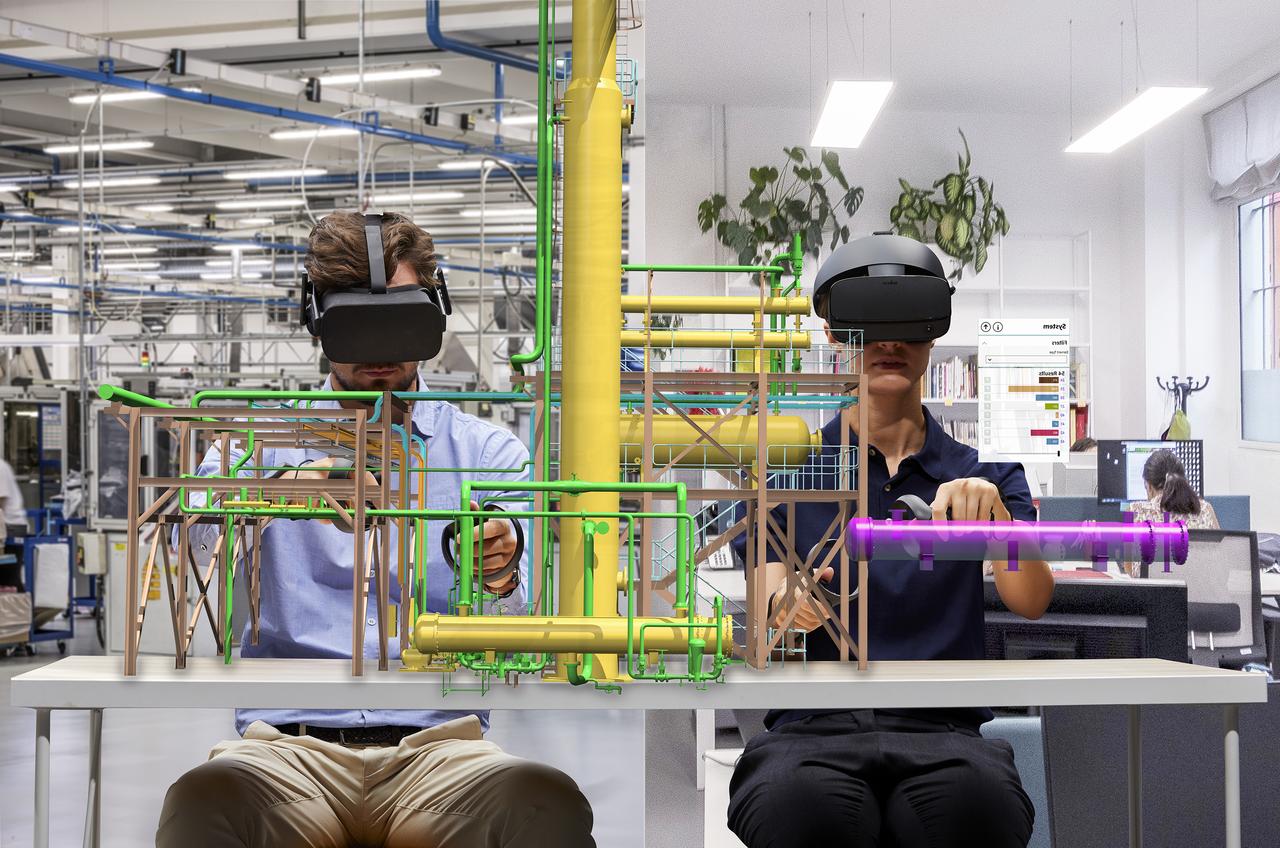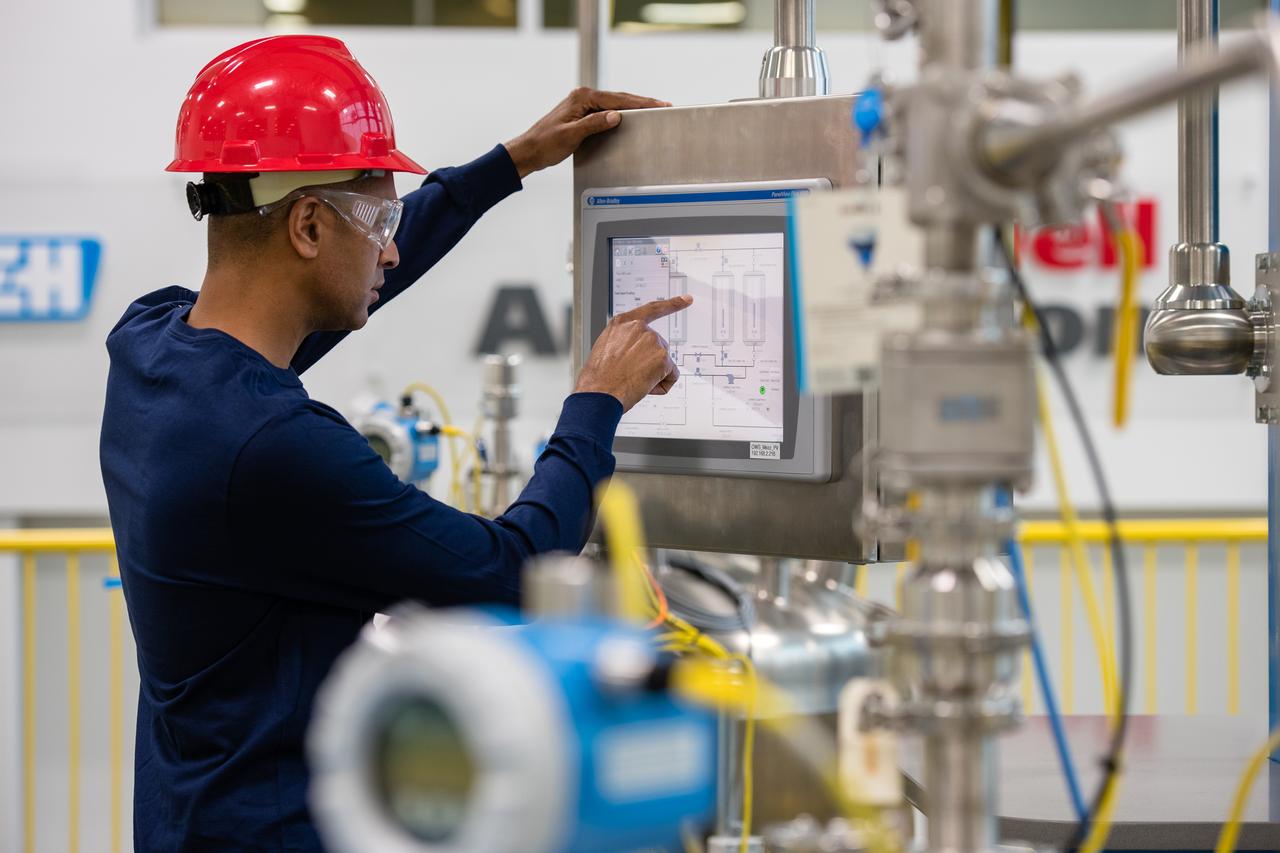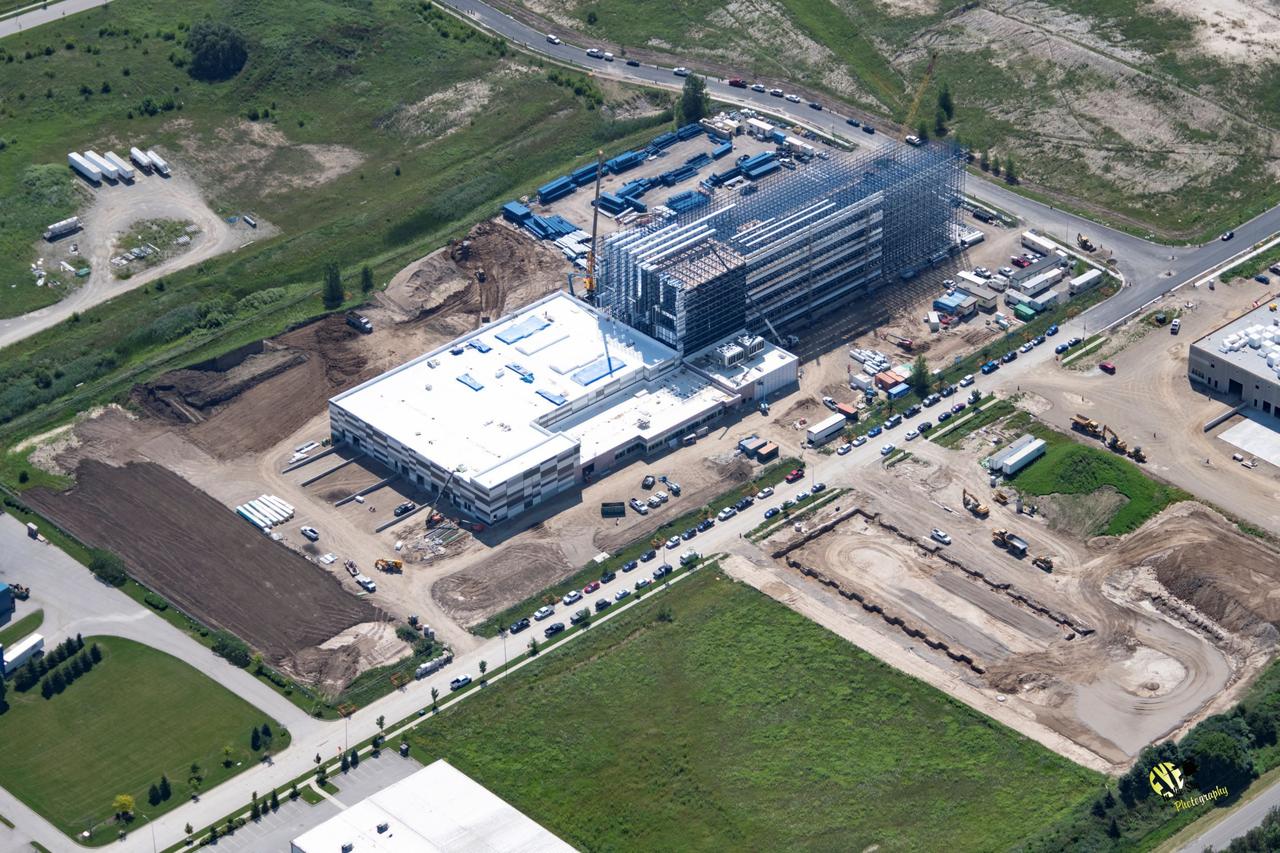Alternative Protein
Automating
Processors turn to automation to provide next-generation, smart factory solutions
A new report by Meticulous Research reveals that the Alternative Protein Market is expected to reach $27.05 billion by 2027, growing at a CAGR of 11.2% during the forecast period 2020-2027. A major shift in the global market’s consumer behavior is increasing interest in alternative protein sources from plant-based to insects. As well, a growing number of people are turning to products that are less taxing on the environment.
Before the COVID-19 pandemic, plant-based food makers were attracting investment from venture capital firms and major established meat supply companies. Investments in alternative-protein manufacturing companies have risen in recent years, as numerous start-ups sell plant-based proteins. Nestle, Cargill and Tyson Foods have all been developing plant-based meat brands alongside their more traditional meat products. And even after the pandemic hit, some plant-based meat manufacturing companies announced new investments. For instance, Impossible Foods raised US $500 million in funding to develop new plant-based meat alternatives in lamb, goat and fish.
We spoke with a couple of automation suppliers to understand the role it plays in alternative protein production.
Lee Coffey, Marketing Development Manager—Food & Beverage, Rockwell Automation says that plant-based meat companies face a unique challenge in that they’re oftentimes attempting to develop a product that mimics the taste, texture and appearance of traditional animal protein.
“To achieve this, processors usually need to combine up to 20 ingredients, including binding agents, texturizers and stabilizers. However, as some traditional protein manufacturers transition to incorporate plant-based proteins manufacturing, they must increase their expertise around ingredient storage, handling and batching,” Coffey says.
Kristen Kazarian, managing editor
Photo courtesy of Getty Images / Arisa Thepbanchornchai
Automation and digital transformation solutions will play an increasingly important role in helping the alternative protein industry reduce its cost structure to a point that allows for closer price parity, and thus greater consumer adoption, to animal protein.
So what of the equipment and process behind alternative protein production?
AVEVA’s Ted Combs, Industry Principal for CPG and Food & Beverage, AVEVA, and formerly Products Industry VP at SAP and Consumer Goods Managing Director at Microsoft, says that the solutions for alternative protein such as plants and animal-based are practically the same.
“The solutions are essentially the same, but the requirements and constraints may differ. For example, genuine protein products decompose faster, have different foodborne illnesses to guard against, and have much more variability in size and shape,” he says. “This may create more opportunities for alternative protein manufacturers, and additionally give them less to worry about. Thus, robotics and AI may be easier to apply.”

The use of automation can add to your production process in ways you may not be aware of. Photo courtesy of AVEVA
Coffey agrees. “Alternatively, plant-based meat facilities typically employ fewer workers and utilize more automation to assemble various ingredients into a final product. Alternative meat products can also have a different texture or appearance (as compared to animal protein) that require specific quality control and inspection guidelines.”
He adds that automation technologies such as a manufacturing execution system (MES) can provide the necessary visibility to meet front-end ingredient requirements by building in ingredient tracking, tracing, quality and recipe management.
Combs does add that refrigeration needs throughout the supply chain process would likely change. How is the cold chain different? By automating the full process, companies are able to digitally maintain order, effectiveness, and quality in their plant operations.
AVEVA offers a Manufacturing Execution System (MES), which allows companies to streamline order flow and production execution, track the transformation of products from raw materials to finished goods, and evaluate and analyze yield, quality and plant resource utilization. “Danone Specialized Nutrition was able to digitally transform its processes with AVEVA MES,” says Combs.
Coffey believes that an excellent MES or batch solution is even more important in alternative protein due to the number of ingredients, variables and additional complexities of creating meat taste out of plants. “Traditional protein processing may have some ingredient additives and variables but nothing like plant-based proteins, which include grain variables, grain quality, moisture content control, flavor additives and more. Current protein facilities aren’t necessarily equipped to manage the different processes and volumes of ingredients needed for plant proteins.

Rockwell’s FactoryTalk Innovation Suite, powered by PTC, collects and consolidates information technology (IT) with operational technology (OT) to allow customers to make data-driven decisions and improve workforce productivity. Photo courtesy of Aquent Studio-Rockwell
Rockwell’s FactoryTalk Innovation Suite, powered by PTC, is one solution that collects and consolidates information technology (IT) with operational technology (OT) to allow customers to make data-driven decisions and improve workforce productivity. As the tough workforce continues, many have begun to leverage augmented reality solutions to digitize work instructions and more effectively transfer knowledge between subject matter experts and new/inexperienced employees, thus reducing onboarding time and improving workforce productivity, says Coffey.
With regard to the protein quality, Combs says that there is a variety of biologic processes going on that may require new sensors to create opportunities to manage the process with greater output, control and yield.
The COVID-19 pandemic may also have had less effect on cell culture-based meat product manufacturing because employees work in cleanroom environments, Coffey says. Due to safety guidelines within these environments, manufacturing employees are more accustomed to gowning and masking requirements commonly used in biomanufacturing, reducing the risk of infection and outbreak.
Additionally, as more companies begin to connect assets throughout their organization with IIoT technology, it is leading to the advancement of powerful artificial intelligence and machine learning algorithms that leverage this information to make better, more informed, real-time decisions that improve yield, productivity and quality.
Brands featuring plant-based proteins must contend with diverse and often conflicting consumer preferences, according to the May 2020 Plant-Based Proteins report from Mintel Group, a global market research firm. The report shows the majority of adults think animal meat is the best source of protein. However, many other consumers believe plant-based meats also can be a strong protein source, but a significant number say meat substitutes are overly processed. “This is especially true of consumers who avoid or limit meat consumption, creating an obstacle for brands hoping to win over this small but potentially loyal demographic,” Mintel reports. Could this be where insect-based protein comes in? It sure could.
Nothing but crickets
Aspire Food Group is a global leader in advanced insect agriculture, using technology to unleash the potential of raw materials from insects that provide better nutrition for people, pets and plants. With a focus on global food sustainability and a low environmental footprint, Aspire is building the first fully automated food-grade insect protein manufacturing facility with assistance from various partners. The building houses a vertical farm using Automated Storage and Retrieval technology as well as integrating IIoT sensors, machine learning and artificial intelligence.

Aspire Food Group, the world’s largest cricket production and processing facility, plans on complete commercial production by 1st quarter 2022. Photo courtesy of Aspire Food Group
The goal? To create more food with a lot less resources. “The planet is growing, but shrinking in resources, and we can’t support global needs with the foods we have,” says Mohammed Ashour, CEO, Aspire Food Group, the world’s largest cricket production and processing facility.
In 2013, Ashour was going after a joint degree in medicine and an MBA at McGill University. He knew that the current food system is tough to scale up, as animals take up so much land, air, water and other resources.
Aspire Food Group has been in the R&D phase for five years. He and his team received the 2013 Hult prize, given by the Clinton Foundation, on their idea of helping to create global food security.
It took one email to change his life—and his pursuit. “It was really a dare to build a business that could address global food security. I recruited a team from my university and started researching. We realized that insects are a widely consumed source of protein around the world,” Ashour says. So Aspire officially launched in 2014 and is headquartered in London, Ontario, Can. with R&D in Austin, Texas.
The group wanted an insect that exists virtually anywhere in the world there are people. The reason? Thinking long-term, to scale their business around the world, and not introduce a source of protein to a country that is foreign to that country, as it could have significant ecological issues, he adds.
“We wanted an insect that has good organoleptic properties—meaning, it tastes good. We landed on crickets, as they have the highest potential for scalability for indoor climate-controlled precision agriculture,” Ashour explains.
Typically, crickets are hand harvested from fields with pesticides and also are tropical and seasonal. Ashour and his team wanted to create vertical farms to build a year-round protein system. The bonus is that not only do they use the crickets, but they use the frass (cricket waste) in production. Frass is used as an organic fertilizer, and for every pound of cricket that’s farmed, there is one pound of frass.
The construction design of the London, Ont. facility started at the end of 2019/beginning of 2020. Of course, COVID had impact on construction. However, one trend to come out of the pandemic was consumer awareness of how the food chain was compromised.

An Automated Storage and Retrieval System from Dematic provides storage for the cricket bins in Aspire Food Group’s vertical farming production. Photo courtesy of Dematic
A smart factory
Ashour says that without expertise in the areas to create the smartest, fully automated, indoor protein production facility in the world, they must rely on partners who do have that experience. And there are a few.
The partners involved with providing automation solutions include Telus, with Swift Labs, to provide automation solutions including sensors, and DarwinAI for its deep learning technology as an automated control system.
Aspire Food Group offers a look into their cricket production and processing facility. Video courtesy of Aspire Food Group
An Automated Storage and Retrieval System comes from Dematic, out of Atlanta. Ashour says that using technology such as AS/RS is pioneering because when you have a self-enclosed protein production system, you can take advantage of a technology whose use-case primarily has been in warehouse and storage solutions and use it to store the cricket bins and to manage the livestock production during the duration of the cricket life. And in 30 days the bins are retrieved and the crickets harvested. Ashour believes that AS/RS in indoor growing applications will grow in the near future.
As project partners, Darwin AI is showcasing its high-performance Explainable AI technologies in Aspire’s operations that will employ industrial automation and robotics, IoT and deep learning to farm crickets that have a similar protein quality to meat and an environmental footprint similar to plants. The automated and modular technology can be scaled and utilized in any geography as well as across other industry sectors, says Sheldon Fernandez, CEO, DarwinAI.
So what, exactly, does DarwinAI provide to Aspire Food Group? Aspire wants to see what the most important factors of cricket growth are. And there are many variables to figure out in order to get the answer. “Part of it is understanding the parameters of light, sound and temperature, and how that ends up affecting cricket growth. Another part is machine learning around analyzing the crickets when they’re produced for size, in order to compare against,” Manary explains. In the future, the automation company will be analyzing the nutrition of the crickets and optimizing that as an additional factor.
“It was really a dare to build a business that could address global food security.”
—Mohammed Ashour, CEO, Aspire Food Group
AI needs a lot of data to learn and a lot of examples of negative data—things that have a bad outcome. “So with a live organism, we need examples of a malnourished organism, a dead organism and so forth,” says Fernandez. “Though they occur naturally, I often need more data than what occurs naturally. So in order to not harm these organisms, you need to find a way to get that negative data.” And that’s where DarwinAI’s unique technology comes in.
As this is DarwinAI’s first project with a living organism, as their usual customer base is in the aerospace, industrial and automotive sectors, Daniel Manary, manager, Professional Services Team, says working with a living organism is interesting because you need the real-time sensor to see how things change over time, such as a little temperature fluctuation. “Having the consistent sensors and even knowing the distance of the sensors from the bin [of crickets] changes things in a way that you don’t get with a non-living organism,” he says.
Fernandez says that the cricket sensitivity to things like temperature variation is a lot more acute than it would be in cattle, for example. Therefore, the level and granularity needed to maintain to detect moisture and temperature, and then to monitor and change it is a lot more fine-grained than mainstream agriculture.
It’s a whole new situation for DarwinAI. “There are sensors we use for this project for even ethanol and sound. So there are additional variables. One of the other interesting facets is that you can breed crickets a lot faster than you can breed cows, so if you’re going through hundreds of thousands of crickets in a month compared to a couple hundred cows,” Manary says. And, seeing the variations and generations of genetics much faster than you would with a cow, helps with finding answers for production purposes.
When asked about the challenges working on this project, Manary says that Aspire is moving from a research phase to a production base, so they are getting into a lot of variation and Aspire is manually collecting data and varying the food and the environment for the crickets. so we’re still in the middle of a research project. Specifically, as an alternative protein, we don’t have the expertise to know how a cricket should grow, so we work with Aspire’s researchers to understand what crickets are supposed to do and the important factors to their growth.
“Building on that,” says Fernandez, “Aspire is innovating and researching in parallel, while we inject artificial intelligence in the process, so it’s tricky. We are both innovating at the same time, and it’s the exciting, but it’s also a challenge.
In February of this year, a consortium of companies led by Aspire received a CAD $16.8mm grant from Next Generation Advanced Manufacturing Supercluster for building the world’s smartest insect production facility. Ashour expects the facility to be 100% in production by first quarter 2022. FE

